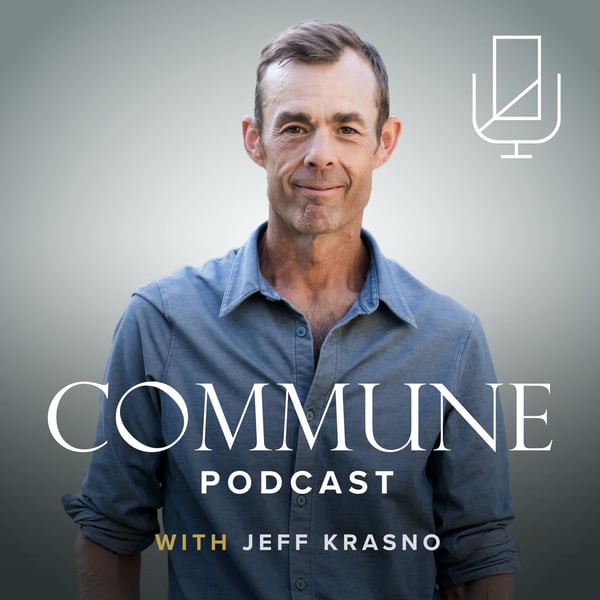553. Why Do Giraffes Have Long Necks?
Commune with Jeff Krasno
Commune Media
4.6 • 654 Ratings
🗓️ 19 March 2024
⏱️ 44 minutes
🧾️ Download transcript
Summary
NEW! Jeff has a Commune course – Good Stress – where he shares the 10 “good stress” protocols that helped him lose 60 pounds, reverse pre-diabetes, improve sleep, increase his ability to focus and feel more energized. You can sign up and get the first 5 days for free at onecommune.com/goodstress.
This podcast is supported by:
Gainful
30% off your first month with code “Commune” visit Gainful.com/commune
LivOn Labs
Get free samples with any purchase at livonlabs.com/commune
LMNT
Get a free sample pack with any purchase at DrinkLMNT.com/COMMUNE
Vivobarefoot
Use code VIVOCOMMUNE15 and get 15% off www.vivobarefoot.com
Wakunaga
Visit Wakunaga and use promo code COMMUNE 103 to request a sample.
Transcript
Click on a timestamp to play from that location
| 0:00.0 | Welcome to the Commune podcast. My name is Jeff Krasno. Today I will explore the concept of epigenetics. |
| 0:15.4 | Now the term epigenetics gets used in a couple different contexts. It can refer to the study of how genes express themselves |
| 0:23.5 | differently in relation to behavior and to the environment. And the term is also used to refer to the |
| 0:33.1 | transgenerational inheritance of acquired traits. And in both contexts, epigenetics cast a shadow |
| 0:42.3 | on our conventional understanding of genetics, genetic determinism, and evolution. |
| 0:50.2 | Now, epigenetics along with the emerging fields of neuroplasticity and the microbiome are pointing |
| 0:57.8 | to a new understanding of the human organism, not as a fixed entity with a sealed fate, but as a |
| 1:07.4 | fluctuating process, changing in relation to its exosome, the foods we eat, stress, |
| 1:16.5 | our relationships, environmental toxins, even our feelings, and our thoughts. |
| 1:21.8 | Okay, so let's start to explore epigenetics by going back some 70 years. So in 1953, |
| 1:32.2 | James Watson and Francis Crick barged into the Eagle Pub in Cambridge, England, and |
| 1:38.6 | rashly proclaimed that they had discovered the secret of life. Now, there was justifiable reason to enjoy a pint |
| 1:48.3 | or three for Watson and Crick had unearthed the structure of DNA, the chemical that encodes |
| 1:58.4 | instructions for the building and replication of life. |
| 2:04.2 | Now, Watson and Crick proposed that the DNA molecule was made up of two chains of nucleotides |
| 2:12.1 | paired in such a way to form a double helix. |
| 2:17.4 | This spiral staircase-like structure explained how the DNA molecule |
| 2:23.1 | could replicate itself during cell division, enabling organisms to reproduce themselves with amazing |
| 2:30.4 | accuracy, except for the occasional mutation. |
| 2:35.5 | This monumental discovery propelled biology for five decades on a quest to study and unpack the |
| 2:45.9 | basic building blocks of life. |
| 2:49.3 | It anchored a paradigm that envisioned life as fixed, predetermined by the |
... |
Please login to see the full transcript.
Disclaimer: The podcast and artwork embedded on this page are from Commune Media, and are the property of its owner and not affiliated with or endorsed by Tapesearch.
Generated transcripts are the property of Commune Media and are distributed freely under the Fair Use doctrine. Transcripts generated by Tapesearch are not guaranteed to be accurate.
Copyright © Tapesearch 2025.

